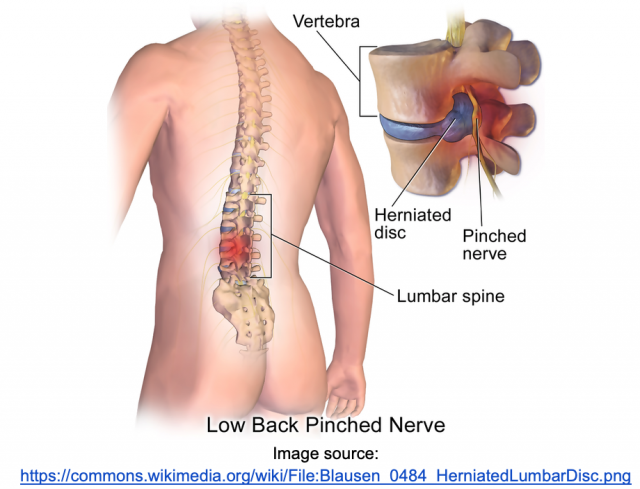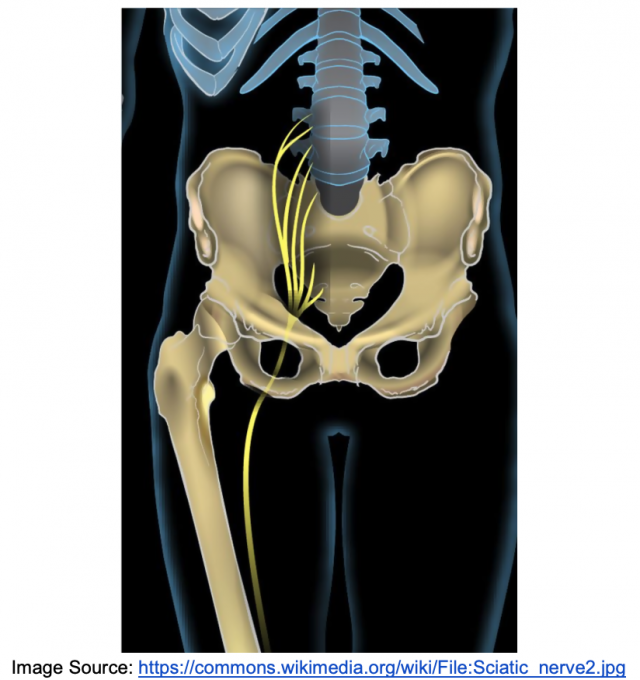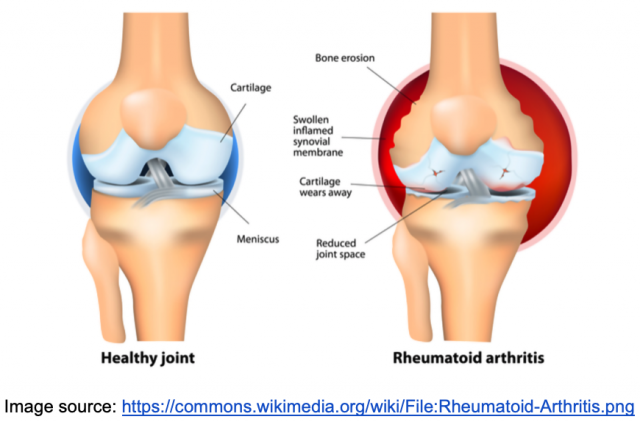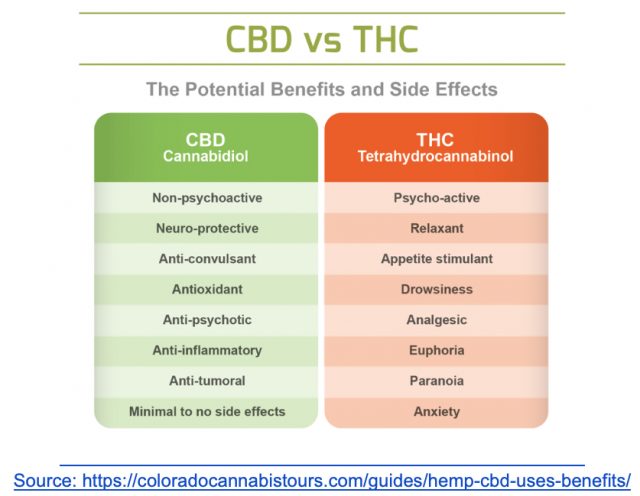Best CBD for Back Pain
Back pain is one of the leading causes of disability and one of the most common diagnoses in patients. An estimated 50% of the adult population of the US admits to having back pain every year and accounts for over 264 million lost days of work a year. It is believed that over 80% of the population will experience back pain at some point in their life, and it affects everyone; the young and elderly alike.
Despite being an extremely common condition, there is no single “cure” for back pain becaue it has many different causes and factors, such as muscle/ligament strains, slipped discs, trauma, arthritis, and skeletal irregularities. Common treatments include physiotherapy, OTC pain medications (e.g. Tylenol, aspirin), electrical therapy, and, in serious cases, narcotics (opioids) and surgery.
In recent years, CBD has seen growing acceptance as a treatment for mild to serious back pain. CBD, an extract from the cannabis plant, is known to work on the endocannabinoid system which plays a major role in regulating pain in the human body. As such, there is great potential for CBD as a viable treatment for nociceptive and neuropathic pain.
This article aims to give a comprehensive and scientific account of back pain and the use of CBD for treating back pain. We will first cover the different causes of back pain then move on to discussing CBD and how it works on the body’s endocannabinoid systems. Lastly, we will look at the use of CBD for treating specific causes of back pain, such as sciatica, herniated discs, and muscle/ligament strains.
What Are the Causes of Back Pain?
WebMD defines “chronic back pain” as any back pain that subsists continually for more than 3-6 months. Everyone has experienced pain before, but chronic pain is different. Chronic pain normally results from damaged nervous tissue, not the stimulation of nociceptors in the body. Generally, pain receptors stop firing once the underlying cause of the pain is resolved, but chronic pain can subsist well after that point.
Back pain is especially common becaue of the many different muscles, tendons, and ligaments that connect to make up the complex load-bearing structures of the back. Think about all the work your back has to do in a normal day; it assists in standing and walking, lifting, sitting, reaching and grasping; virtually every physical activity involves the back, which makes back pain a particularly nasty and unfriendly condition. All it takes is just one failure in the back’s mechanisms to throw things awry.
Herniated Disc
One of the most common causes of back pain is a slipped or herniated disc. Between each vertebrae in the spine lie small interspinal discs made of soft connective tissue that connect and cushion the vertebrae from shock. The discs consist of an outer layer called the annulus that surrounds the jelly-like nucleus in the center.
Mechanical stress and physical injury can cause the annulus to rupture and the jelly substance to bulge out. The bulging disc pushes on the spinal cord which causes s sharp shooting pain up and down the spine. Herniated discs can be caused by specific injuries or by long-term degradation from use.

Common treatments for a herniated disc are extended rest, physical therapy to strengthen the back muscles, non-steroidal anti-inflammatory drugs (aspirin, ibuprofen, naproxen, etc), and in extreme cases, surgery. Since herniated discs result from the degradation and inflammation of connective tissue, treatments to regrow damaged connective tissue are a viable option for herniated disc back pain interventions. There is some evidence the CBD adn other cannabinoids can aid in this process of regenerating damaged connective tissue.
Sciatica
Sciatica refers to back pain that related to a problem of the sciatic nerve in the hips and lower back. These pain could be caused by swelling tissue that presses on the nerve or nerve damage from an injury. Sciatic pain is described as a sharp shooting pain that originates in the lower back and radiates through the hips, leg, and foot. Generally, sciatica pain is localized to one side.

Sciatica itself can be caused by numerous things, including a narrowing of the spinal canal, spinal disc injuries, spondylolisthesis (slipping of vertebrae), and muscle spasm. Treatment of sciatica generally involves heat/ice treatments, OTC pain medications, exercise and physical therapy, muscle relaxers, and, in extreme cases, surgery.
Arthritis
Another common cause of back pain is arthritis. Arthritis refers to inflammation of the joints and is characterized by stiff and painful movement, joint pain, and red/swelled tissue near the joints. Arthritis is caused by two main conditions: osteoarthritis and rheumatoid arthritis.
Osteoarthritis, the most common kind of arthritis, is caused by the breakdown of cartilaginous tissue in the joints due to overuse and old age. Pressure and friction rub away the soft cartilage and results in bone grinding on bone, causing pain and restricted motion. Osteoarthritis is normally present in older populations but can be present in younger people, especially those who have sustained joint injuries.
Rheumatoid arthritis refers to the swelling of the joints that is caused by the body’s immune system attacking healthy connective tissue. In cases of rheumatoid arthritis, the immune system begins to attack the synovial membrane, a tough thick membrane that surrounds the joints and produces the fluid that keeps them well lubricated. Damage to this tissue causes swelling, redness, and tissue degradation which all results in pain and stiffness in movement. It is currently unknown exactly why the body goes haywire and attacks its own tissue, thought the condition is believed to be partly genetic. Risk factors for rheumatoid arthritis include family history, age, sex (women seem to be more likely to develop the condition), joint injury and obesity.

Pain from arthritis is normally treated with analgesics, anti-inflammatory meds, substances called “counter-irritants” that disrupt pain transmission (capsaicin, the ingredient that makes peppers spicy, is an example), and, n the case of rheumatoid arthritis, drugs the suppress the immune system’s activity (corticosteroids, antirheumatic drugs, etc). In serious cases, surgery and joint replacement are options.
Other causes of back pain
Aside from these listed issues, back pain can be caused by traumatic injuries, muscle/ligament strains, musculoskeletal deformations (ex. scoliosis), and other kinds of inflammation.
Back pain is known to be associated with several risk factors including:
- Age: Back pain gets more common the older you get
- Lack of exercise: Lack of exercise = weak back muscles that cannot handle the strain of daily activities
- Obesity: A high BMI puts more stress on the back muscles and spine, as those two structures together support the majority of the body’s weight.
- Disease: Various illness and disease can manifest in back pain
- Improper liting: improper technique while lifting weights can strain muscles, ligaments, and tendons.
- Poor posture: Bad posture increases the risk of back pain by putting stress on the muscles and joints. This is especially common in people who sit at a desk all day for work or lead sedentary lives.
- Smoking: Smoking slows the rate of blood flow to the spine which slows the rate of nutrient transport. Smoking also slows the rate of healing from injuries.
Now that we have covered the basics of back pain, let’s talk about CBD and how CBD works on the human body.
What is CBD?
CBD (cannabidiol) is one of the 113 known chemicals found in the cannabis plant. CBD is a kind of cannabinoid, a chemical that is distinguished by its capacity to affect cannabinoid receptors in the human body.
CBD is most often used for its pain relieving properties. Several scientific studies have found that CBD is an extremely effective method of treating and managing mild to severe neuropathic and nociceptive pain. A growing list of personal stories from CBD users also signifies a great potential for alternative methods to treat pain.
CBD is NOT the same as THC, the chemical most commonly associated with the cannabis plant. While CBD and THC are both cannabinoids and share a similar chemical structure, they act on the body differently and produce different effects. It is well-known that ingestion of THC has strong psychoactive effects, including a cerebral “high.” Consumption of even small quantities of THC in some people produces strong feelings of paranoia and anxiety.
CBD, in contrast, is known to produce very little, if any, psychoactive effect and not produce anxiety and paranoia. CBD is normally consumed as a tincture mixed with oil, or inhaled by “vaping.”

Considering the severity of the current opioid crisis, new forms of managing chronic pain are seriously needed. CBD is being studied as a potential candidate to fill that void. Unlike common pain medications like oxycontin or Percocet, CBD has not been found to be addiction or create any physiological dependencies. In fact, there is evidence that CBD may help indirectly treat physiological addiction by its activity on the body’s endocannabinoid system.
CBD and the Endocannabinoid system
That is the third time we have mentioned the body’s “endocannabinoid system.” What exactly is this system, and what does it do?
The endocannabinoid system refers to a network of cannabinoids receptors and neurotransmitters present in the bodies central and peripheral nervous systems. The endocannabinoid system plays an integral role in regulating various processes in the body such as pain sensitivity/signaling, mood, memory, appetite, and even fertility.
To date, there have been discovered two main kinds of receptor cells in the endocannabinoid system, dubbed CB1 and CB2 receptors. Interaction with these receptors by cannabinoids affects the functioning of the endocannabinoid system.
According to the endocannabinoid deficiency theory, deviations from standard levels of endocannabinoid activity is the underlying cause of several non-obviously related pain condition, such as fibromyalgia, multiple sclerosis, irritable bowel syndrome, and other treatment-resistant non-specific pain disorders. Thus, it is thought that cannabinoids treatments such as CBD can be used to manage endocannabinoid deficiency syndrome.
How Can CBD Help Manage Back Pain?
How exactly, does CBD interact with the body and reduce pain? While the specifics are not well understood, it is believed that CBD can help manage pain by two mechanisms, by acting as an anti-inflammatory agent and by dampening nerve signals associated with pain.
Inflammation is caused by the activity of T-cells. After an injury, T-cells produces lymphocytes that work to repair the damage. These lymphocytes can leak into other parts of the body, causing tissue to swell and press on pain receptors. CBD has been shown to dampen this mechanism by inhibiting the production of lymphocytes from T-cells. This results in a lowered inflammation response.
Alternatively, CBD has been shown to interact indirectly with CB2 receptors to interfere with pain signals. Bogus signals from damaged nerves are one of the main causes of neuropathic back pain, so CBD has strong potential for the treatment of neuropathic pain.
CBD and arthritis
CBD has been shown to be effective in the treatment of arthritis. Studies from the past 10 years seem to indicate that CBD is an effective pain management technique for inflammation caused by arthritis and pain caused by bone-on-bone grinding. Based on what we know about how CBD works in the body, it makes sense that it can be used to help arthritis. CBD is a known anti-inflammatory agent and arthritic pain is primarily caused by inflammation of the joints and surrounding tissue.
CBD and sciatica
Unfortunately, studies on the effects of CBD on sciatica specifically are lacking. However, several anecdotal testimonies form user report that CBD is a safe and effective method to manage sciatica pain. To be clear, anecdotal stories do not trump clinical trials, but in the absence of properly funded trials, they indicate good potential. We know that sciatica is caused by damage to nerves caused by swelling, so there is a good reason to think clinical trials would show a positive role for CBD in treating sciatica pain.
CBD and herniated discs
As we have learned, pain from a herniated disc is caused by swelling and bulging of the disc pressing on the spinal cord. Herniated discs are often accompanied by large amounts of swelling and inflammation. CBD, as we have covered already, is known to be an effective anti-inflammatory agent and so has the potential to help treat swollen discs and the ensuing pain.
Best CBD Products for Back Pain
So which CBD products are the best for helping manage back pain? We have assembled a list of some of our favorites.
PureKana is probably one of the best known CBD manufacturers in the US. All of their products are independently tested by a third party for quality assurance and their website is one of the most user-friendly CBD sites we have seen.
All of their products are made with 100% organic hemp and the CO2 extraction method leaves a high purity substance. Their stuff isn’t exactly cheap per se, but many users report it’s totally worth the extra bit of cash.
CBD Essences offers a wide variety of CBD products for back pain, ranging from vape cartridges to oils and tinctures. They also offer capsule, powdered concentrates, and pet products. In fact, its wide product selection is precisely one of its strengths. CBD Essence makes its products from Colorado-grown hemp and uses third-party testing to gauge the purity of their products.
Elixinol is a CBD manufacturer based out of Australia but they deliver their products worldwide. As far as their CBD products go, they are top quality. Their extraction process is one of the best and they offer oils, balms, capsules, hemp seeds, and even protein powders. Elixinol understands that there do not yet exist regulations regarding the manufacture of CBD products so they put all of their products through rigorous third party testing to attest to the purity of their mixtures. They offer concentrations from 300mg to 500mg in pure blend and super blend varieties that contain a cocktail of beneficial cannabinoids and terpenes.
Conclusions: Can CBD hep treat back pain?
It is important to remember that CBD is not a “cure” for anything and is not yet approved by the FDA for any treatment (except for 2 very rare types of epilepsy). Despite the lack of official recognition, the general consensu around the medical community is the CBD is a potent and effective means of managing mild to severe back pain that is safe and non-addictive. Years of anecdotal reports from users who suffer from chronic pain issues paint a positive picture of the potential for CBD as an alternative form of pain therapy.
CBD has many benefits over medical marijuana or THC treatments. First of all, the sale and use of CBD is generally not regulated and it is legal in all 50 states under some specific conditions. CBD also does not produce the psychoactive effects that THC does and are a cannabinoid treatment for those who do not want a “buzz” or “high.” Lastly, CBD is not associated with increased paranoia or anxiety like THC use is.
As with any medication, make sure to consult your doctor first if you want to try CBD. They can help you find the right cocktail and a suitable dosage plan.

